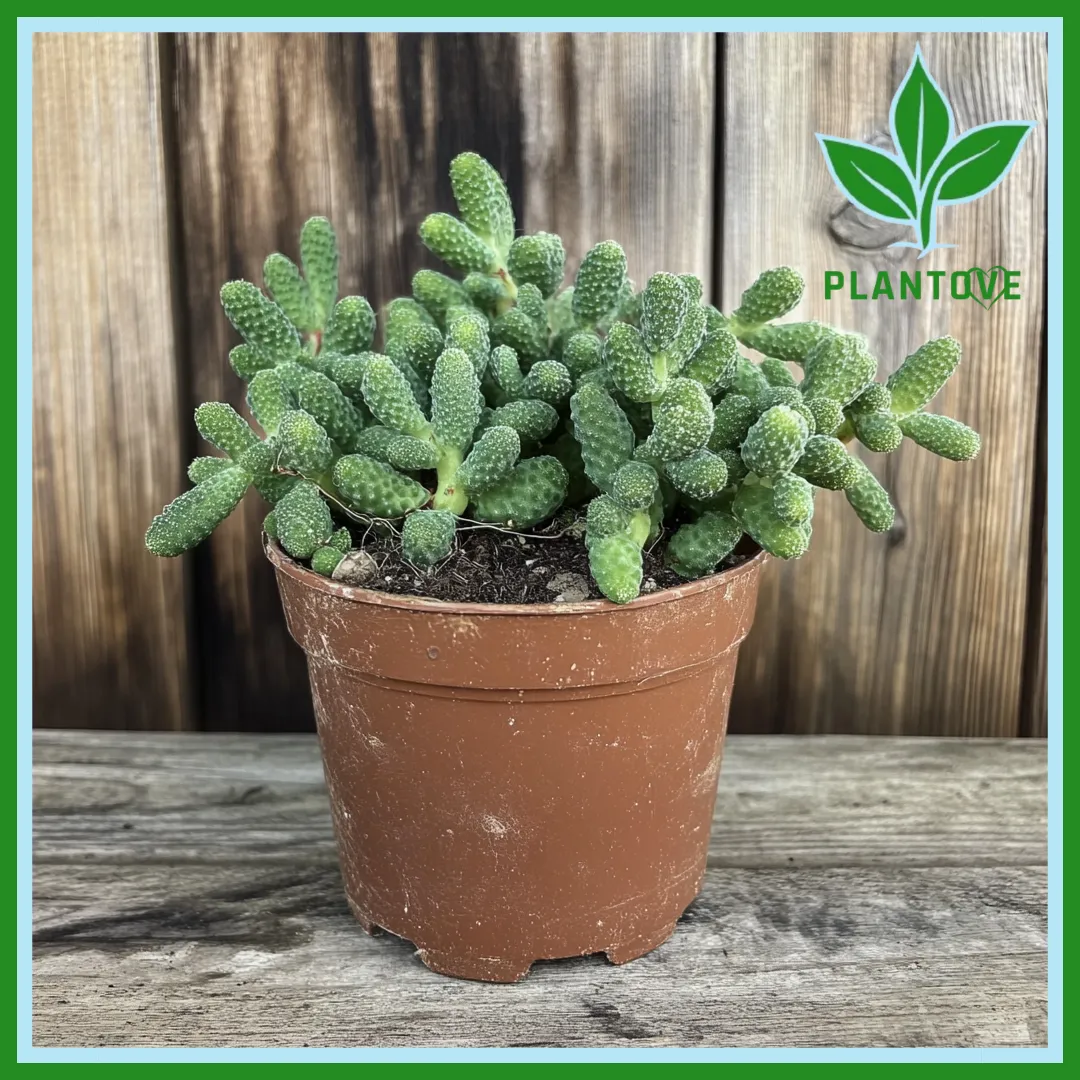The pickle plant (Delosperma echinatum) is a quirky, fascinating succulent with small, pickle-like leaves that make it stand out in any garden or indoor plant collection. Native to South Africa, this hardy plant is prized for its low-maintenance care routine and its ability to thrive in a variety of conditions. With the right care, it can become a long-lasting addition to your plant family.
In this comprehensive guide, we’ll walk through everything you need to know about pickle plant care, propagation, common problems, soil requirements, and more. Whether you’re a succulent enthusiast or just starting your plant journey, this article will provide you with all the tools you need to grow and maintain a healthy pickle plant.
What Is a Pickle Plant?
The pickle plant is a member of the Aizoaceae family, known for its succulent properties. Its spiny, fleshy leaves resemble tiny pickles, hence the name. Despite its somewhat prickly appearance, the plant is soft to the touch and poses no harm, making it a perfect choice for both indoor and outdoor spaces.
With its unique look and minimal care requirements, the pickle plant has become increasingly popular in homes across the United States. It produces small, daisy-like yellow flowers during warmer months, adding a splash of color to its already appealing appearance.
Pickle Plant Care: A Step-by-Step Guide
Caring for a pickle plant is easy, even for beginner plant owners. The key is understanding its natural environment and mimicking those conditions as closely as possible. Below, we’ll cover the essential elements of pickle plant care, including light, water, soil, and temperature requirements.
Light Requirements
Pickle plants thrive in bright, indirect sunlight. If grown indoors, place them near a sunny window, but avoid exposing them to harsh, direct sunlight for extended periods, as this can cause the leaves to burn. Outdoors, they do well in partial shade, especially in regions with intense summer heat.
Too much direct sunlight can lead to leaf scorch, so it’s important to strike a balance. If you notice browning or curling at the edges of the leaves, consider moving the plant to a slightly more shaded spot.
Watering
Watering is one of the most critical aspects of pickle plant care. Like most succulents, the pickle plant is highly drought-tolerant and prefers dry conditions. Overwatering can quickly lead to root rot, one of the most common problems with succulents.
To avoid overwatering, allow the soil to dry out completely between waterings. When you do water, ensure it is a deep, thorough watering that allows excess water to drain from the pot. For indoor pickle plants, this could mean watering once every two to three weeks, depending on the humidity and temperature in your home.
During the winter months, reduce the watering schedule even further, as the plant enters dormancy and requires less moisture.
Soil
Soil is another critical factor in keeping your pickle plant healthy. Succulents, including the pickle plant, require well-draining soil to prevent water from sitting around the roots, which can lead to root rot.
A cactus or succulent potting mix is ideal for pickle plants. If you prefer to make your own mix, combine regular potting soil with sand or perlite to improve drainage. Ensure that your pot has drainage holes to allow any excess water to escape.
Temperature and Humidity
Pickle plants prefer warm temperatures and low humidity, making them well-suited for most indoor environments. They thrive in temperatures between 65°F and 75°F (18°C to 24°C). Avoid placing your pickle plant near cold drafts, air conditioning vents, or heaters, as sudden temperature changes can stress the plant.
If you’re growing the plant outdoors, it should be brought inside during colder months, as it is not frost-tolerant. In areas with mild winters, you can leave your pickle plant outside year-round, provided it’s in a sheltered spot that protects it from frost.
Pickle Plant Propagation
Pickle plants are easy to propagate, making them a great plant for sharing with friends or expanding your own collection. There are two primary methods for propagating pickle plants: stem cuttings and leaf cuttings. Let’s explore both methods.
Propagation by Stem Cuttings
- Choose a Healthy Stem: Select a healthy stem from your pickle plant. The stem should have multiple leaves and no signs of disease or damage.
- Cut the Stem: Using a clean, sharp knife or scissors, cut the stem just below a node (the point where a leaf attaches to the stem).
- Allow the Cuttings to Dry: Let the cutting dry for one to two days, allowing the cut end to callous over. This helps prevent rot when the cutting is planted.
- Plant the Cutting: Once the cutting has dried, plant it in a pot with well-draining soil. Keep the soil lightly moist (but not wet) until roots begin to form.
- Monitor Growth: Within a few weeks, the cutting should start to develop roots and new growth. Once established, you can treat it like a mature pickle plant.
Propagation by Leaf Cuttings
- Select a Leaf: Gently twist a healthy leaf from the plant, ensuring you remove the entire leaf, including the base.
- Let the Leaf Dry: Just like with stem cuttings, allow the leaf to dry for a day or two until the cut end forms a callous.
- Place the Leaf on Soil: Lay the leaf on top of well-draining soil and water lightly.
- Wait for Roots to Form: After a few weeks, small roots should begin to grow from the base of the leaf. Once the new plant begins to take root, you can plant it in its own pot.
Common Pickle Plant Problems
While pickle plants are generally easy to care for, they can encounter a few problems. Here are some of the most common issues and how to resolve them:
Overwatering and Root Rot
Overwatering is the most common issue pickle plant owners face. When the plant receives too much water, its roots become waterlogged, leading to root rot. If you notice the leaves turning mushy or discolored, it’s likely a sign of overwatering.
Solution: Reduce your watering schedule, and always let the soil dry out completely between waterings. If root rot has already set in, you may need to repot the plant in fresh, dry soil, removing any rotted roots.
Leaf Burn
If your plant is exposed to too much direct sunlight, the leaves can become scorched, developing brown or crispy spots.
Solution: Move the plant to a location with bright, indirect sunlight. You can also use a sheer curtain to filter the light if it’s placed near a window.
Pests
Although pickle plants are generally pest-resistant, they can occasionally attract pests like mealybugs or aphids.
Solution: If you notice pests, isolate the plant and treat it with insecticidal soap or neem oil. Be sure to follow up with additional treatments as needed to completely eradicate the pests.
Pickle Plant Soil and Watering Tips
To keep your pickle plant thriving, it’s essential to provide the right soil and watering routine. Succulents like the pickle plant thrive in well-draining soil mixes designed for cacti or succulents. Regular potting soil retains too much moisture and can lead to root problems, so be sure to choose a soil mix with sand or perlite for improved drainage.
When it comes to watering, less is more. The pickle plant stores water in its leaves and doesn’t need to be watered frequently. Always allow the soil to dry out completely between waterings, and avoid letting the plant sit in water for extended periods.
Conclusion
The pickle plant is a charming, low-maintenance succulent that adds a touch of whimsy to any garden or indoor space. With the right care, including proper watering, soil, and light conditions, your pickle plant will thrive and may even produce delicate yellow flowers during the warmer months.
Whether you’re propagating new plants or troubleshooting common issues, this guide has you covered. With minimal effort, your pickle plant will continue to grow and delight you for years to come.

